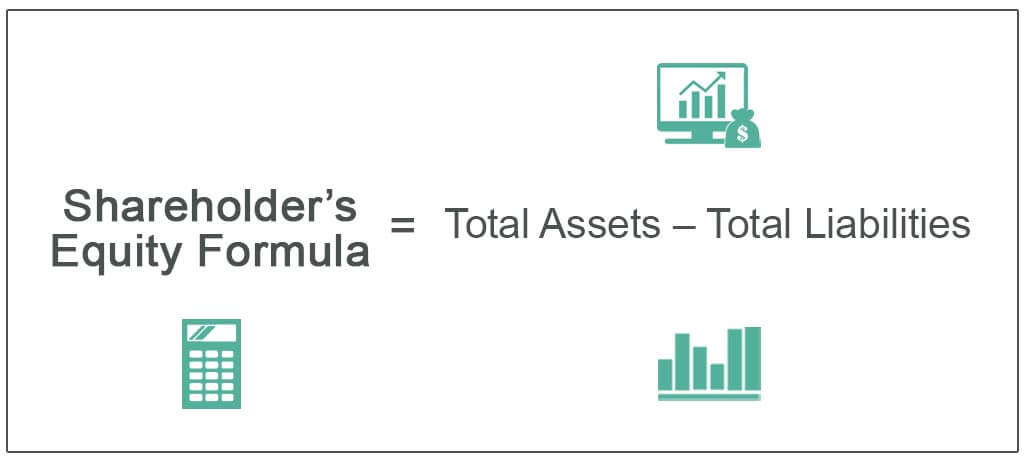How to Calculate Shareholders’ Equity

You may have heard of the concept of equity, but how do you define it? Equity is the value of a company’s stock, which can be divided among the owners. Ownership equity is determined by the percentage of paid shares in a company. Equity dollar value is determined by deducting liabilities from assets and multiplying it by the ownership percentage. In this article, you’ll learn about how equity works and how to calculate your own share of it.
Shareholders’ equity
What is shareholders’ equity? Shareholders’ equity is the total amount of money that the owners have invested in the business and which will be returned to them in the event of liquidation. The amount of equity is also the amount that the owners will get back after all debts have been paid. It is important to understand how to calculate shareholders’ equity. In order to calculate shareholders’ equity, you must first figure out the total assets of the company, minus its total liabilities. This subtotal is known as shareholders’ equity, and it is equal to the sum of the assets and liabilities of the company.
A negative shareholders’ equity indicates that the company’s assets are less than its liabilities, and this could indicate that the company may face bankruptcy in the future. On the other hand, a positive equity reveals that the business is well-run and has enough reserves to cover any unexpected liabilities. However, a negative equity can also be overlooked if the company has redeeming qualities, or is in a growing industry. In addition to examining shareholders’ equity, investors should also look at other financial indicators such as the price-to-earnings ratio, industry trends, and dividends.
Ownership equity
Ownership equity is a business measure that represents the amount of money that the owner has invested in the company and has taken out in the form of debt. This measure can be positive or negative, depending on the situation. Positive owner’s equity is a result of an increase in the value of the assets, while a negative owner’s equity is a result of a decrease in the value of the assets. The balance of ownership equity can change due to a shift in the value of assets, the purchase or sale of assets, or even depreciation.
The ratio of ownership equity to the value of a company’s assets and liabilities is called its shareholder’s equity. Ownership equity increases with increased profits and is also known as the “net worth” or “shareholder’s funds” of a company. However, if the value of an organization is low, then the company may pose a greater investment risk than one with a high ownership equity. However, it’s important to remember that an owner’s equity does not represent a majority of the business’s assets, as this can make it appear more ‘unliquid’ than necessary.
Shareholders’ value
According to Alfred Rappaport, the best way to increase shareholder value is to focus on improving cash flows. Shareholder value is a measure of the terminal value of a company. As long as cash inflows exceed risky investments, the value of the company is positive. It is important to remember that the market value of a company’s shares is an important component of its shareholder value. If the company is properly managed, it can generate greater cash flows with a lower investment in its assets.
In the late 20th century, political and economic changes started shifting the balance of power in the economy. In this regard, power depends on the ability to shape incentives and define interests of others. In the present day, the shift from the traditional value system to the shareholder-value model is notable in that it is unique, because it has paved the way for outsiders to influence corporate interests. But in the future, shareholder value is only one of the important elements of measuring a company’s success.
Book value
The difference between book value and equity is crucial to interpreting a company’s financial health. The book value of equity represents what would remain for the common shareholders after all liabilities and assets are liquidated. This number is usually less than market value because the assets are carried at their historical cost, so it understates the book value. Analysts often prefer a balance sheet marked to market, since it captures the most current market value of assets and liabilities.
The authors found that the difference between book value and equity is largely driven by the accounting methods. In their study, they used the Davidson-MacKinnon J-test and Ohlson (1995) models to measure the relative value relevance of book value and equity. They found that book value and earnings reported in accordance with IASs had higher information content than those prepared by domestic GAAPs. This result suggests that the book value and equity reported by companies using IASs is more relevant for the purposes of equity valuation.
Market value
Market value of equity is a measure of the price a company can fetch in the stock market. It is the current price of a firm’s shares multiplied by the number of outstanding shares. The book value of equity is another method that analysts use. This method is conservative and does not suffer from volatility. In addition, some firms issue several classes of shares. To calculate the total value of equity, the market values of these shares and other claims on the company’s assets must be added together.
The market value of an equity is affected by various factors, such as the sector a company belongs to, its profitability, and its debt load. The business cycle is also an important factor in determining the market value. During recession, market values decrease, while during economic expansion, they rise. But as the number of competitors increases, the market value of equity increases. That’s why it is crucial to understand the factors that influence the market value of equity.




